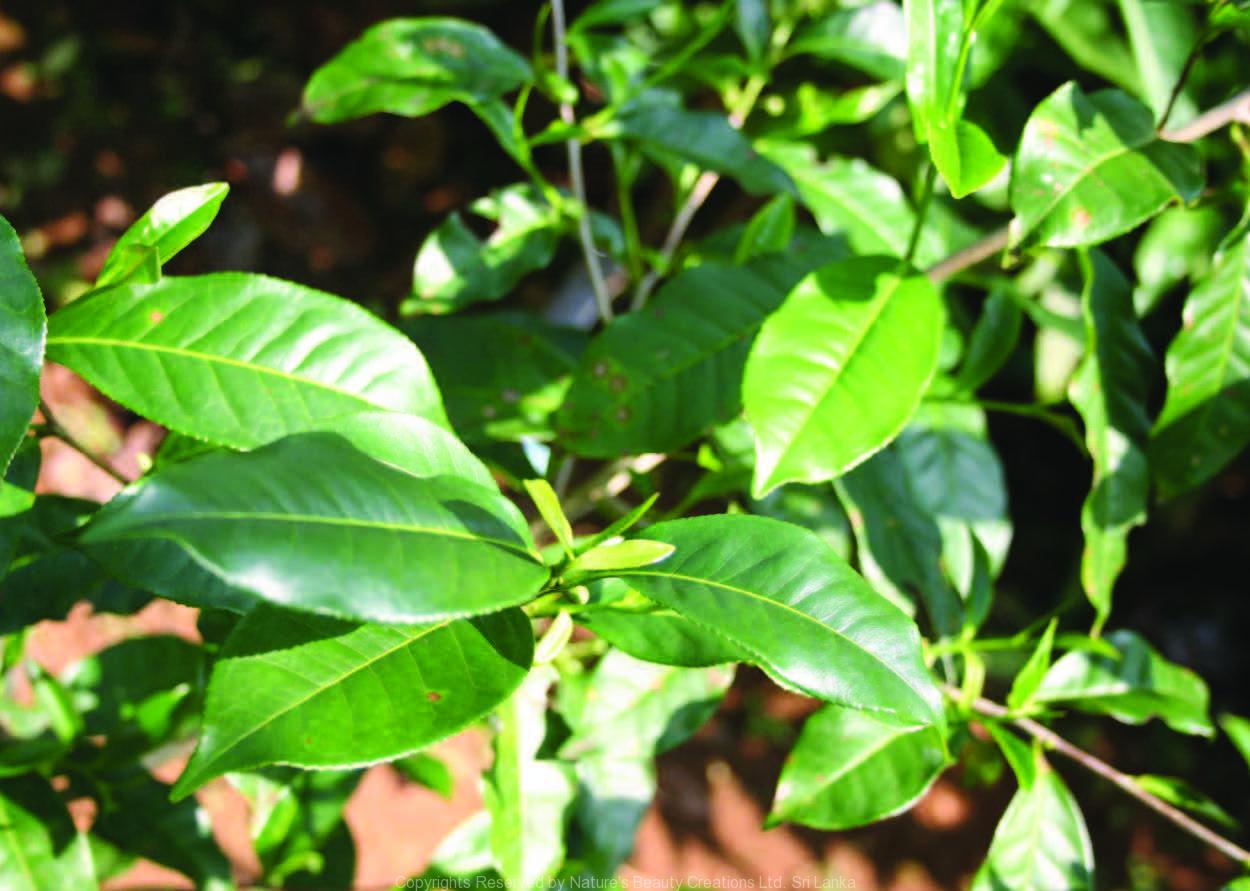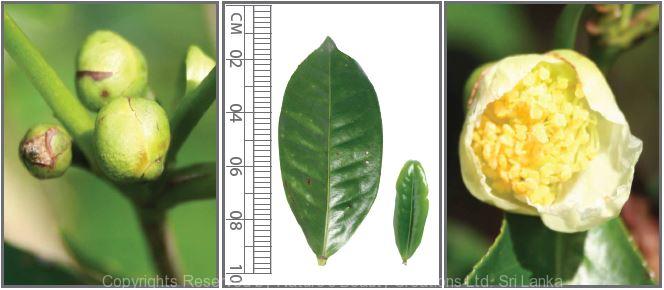

Traditional Knowledge
Useful plant parts :
Tender leaf and tip
Uses in traditional medicine :
- Eases mental fatigue and lowers the risk of arteriosclerosis
- Helps to reduce blood glucose level
- Acts as a stimulant, diuretic and an astringent
Scientific Research
Chemical constituents:
Alkaloids: caffeine, theobromine, flavonoids: catechin, epicatechin, epiafzelechin, ampelopsin, gallic acid and gallic acid esters of catechin and epicatechin, glaetosides and glucosides of terpene: myricetin and flavonoids: quercetin and kaempferol from plant
Bioactivity :
Ethanol extract of flowers: antioxidative; white and green tea: antiwrinkle properties, anticancer, antibacterial; black tea: oral hypoglycaemic, antihyperglycaemic, antidiabetic and antiulcer; green and black tea: immunomodulatory properties; aqueous methanol extract of dried root extract: anti-inflammatory, analgaesic, antipyretic
Clinical:
Green tea is a safe and effective dietary supplement for preventing cold and flu symptoms, for enhancing γ, δ T cell function, supplement for decreasing blood pressure, LDL cholesterol, oxidative stress, and a marker of chronic inflammation, and cardiovascular risk factors, reported to posses beneficial effects on cancer prevention
References : Abeywickrama, K. R. et al., (2011), Oral hypoglycaemic, antihypergly- caemic and antidiabetic activities of Sri Lankan Broken Orange Pekoe Fannings (BOPF) grade black tea (Camellia sinensis L.) in rats, J Ethnopharmacol, 135(2), 278-86. Chattopadhyay, P. et al., (2004), Anti-inflammatory activity of tea (Camellia sinensis) root extract, Life Sci, 74(15), 1839-49. Liu, J. et al., (2008), Green tea (Camellia sinensis) and cancer preven- tion: a systematic review of randomized trials and epidemiological studies, Chinese Medicine, 3, 12. Maity, S. et al., (1995), Anti-ulcer effect of the hot water extract of black tea (Camellia sinensis), J Ethnopharmacol, 46(3), 167-74. Nantz, M. P. et al., (2009), Standardized capsule of Camellia sinensis lowers cardiovascular risk factors in a randomized, double-blind, placebo-controlled study, Nutrition, 25(2), 147-154. Rowe, C. A. et al., (2007), Specific Formulation of Camellia sinensis Prevents Cold and Flu Symptoms and Enhances γδ T Cell Function: A Randomized, Double-Blind, Placebo-Controlled Study, Journal of the American College of Nutrition, 26(5), 445-452. Thring, T. S. et al., (2009), Anti-collagenase, anti-elastase and anti-oxidant activities of extracts from 21 plants, BMC Complementary and Alternative Medicine, 9(27). Yang, Z. et al., (2009), Isolation and identification of compounds from the ethanolic extract of flowers of the tea (Camellia sinensis) plant and their contribution to the antioxidant capacity, LWT – Food Science and Technology, 42(8), 1439-1443. Zvetkova, E. et al., (2001), Aqueous extracts of Crinum latifolium (L.) and Camellia sinensis show immunomodulatory properties in human peripheral blood mononuclear cells, International immunophermacol- ogy, 1, 2143-2150. Zhu, H. B. et al., (2013), Chemical constituents of Camellia sinensis var. assamica, Zhongguo Zhong Yao Za Zhi, 38(9), 1386-9.
Copyrights Reserved By
Natures Beauty Creations




